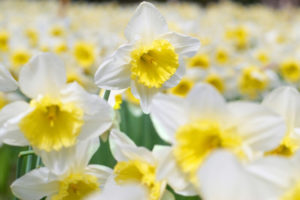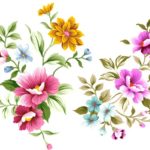Interesting facts about daffodils
 Which one of us does not know daffodils, these tender flowers with sweet aroma? Fragile and very beautiful, they are very popular with florists in the vastness of Russia, as they are well established in the middle lane, and some special care is not required. Narcissus there are many different varieties, although the most popular in our country is the usual white flowers of this species.
Which one of us does not know daffodils, these tender flowers with sweet aroma? Fragile and very beautiful, they are very popular with florists in the vastness of Russia, as they are well established in the middle lane, and some special care is not required. Narcissus there are many different varieties, although the most popular in our country is the usual white flowers of this species.
Daffodils are well known for their strong, sweet and even intoxicating aroma. It is for this reason that the name of the flower has the same root with the word “anesthesia”.
Narcissuses became an integral part of perfumery even at the time of the birth of this art, but now the natural oils of these flowers almost completely replaced synthetic analogues.
In translation from the conventional floral language, narcissuses mean selfishness, fruitless hopes and desires.
According to the legend, Narcissus was a fine young man, so proud of his beauty that he died on the bank of the stream, unable to tear his eyes from the bewitching reflection. On the place of death of a narcissistic young man, flowers grew called narcissuses.
Transcarpathian region of Ukraine is a protected massif “Valley of Narcissus”, which is a huge flowering field of different types of narcissi and other plants, including very rare.
In England, daffodils are called “spring lilies.”
With good care, daffodils can bloom for up to six months.
Inhabitants of English Wales believe that the person who first saw the spring daffodil, the next year will live comfortably.
On the planet there are up to 13 thousand hybrids of daffodils and only 54 primary species.
Narcissus juice is harmful to other plants, so before adding them to the bouquet, florists withstand flowers in the water for a day.
Because of the poisonous juice of daffodils, almost no animals eat.
Bouquets of daffodils are usually given on the tenth anniversary of the wedding.
In ancient Greek myths, daffodils often act as a symbol of the deceased. The Greeks believed that from these flowers they weaved wreaths of Erinia – the goddess of revenge.
The ancient Romans treated the flower differently and gave yellow daffodils triumphant battles. In addition, these flowers were sacrificed to Pluto and the Furies.
Images of daffodils were decorated with walls in ancient Roman Pompeii.
In Persia, the rich aroma of daffodils was associated with the smell of youth.
In China, daffodils are an integral part of the celebration of the New Year and are considered a guarantee of future happiness.
The great Russian writer Ivan Turgenev called narcissus his favorite flower.
The first European country to which the narcissus was introduced, in the second half of the sixteenth century, was England – the flower became a gift for the noble nobility. Perhaps, that is why the narcissus remains the favorite flower of the inhabitants of the kingdom, having pressed the rose from the pedestal.
In the past, in Switzerland in early May, celebrated the holiday of the narcissus, decorating all the streets and buildings with flower garlands.
In Prussia, the newlywed girl left her parents’ house with a daffodil, planted him in a new house in a new house and carefully looked after the flower, since it was believed that the well-being of a young family depends on the preservation of narcissus.
In Russia, the narcissus, like many other flowers, was brought by Emperor Peter I, who initiated the creation of pharmacy gardens (in our view – botanical gardens). However, even in the first half of the last century, daffodils in Russia were considered rare flowers.
Narcissus is the national emblem of the Welsh people inhabiting Wales in England.
Due to the presence of essential oils in them, daffodils have long been used in medicine, although these flowers can cause severe allergic reactions.



























